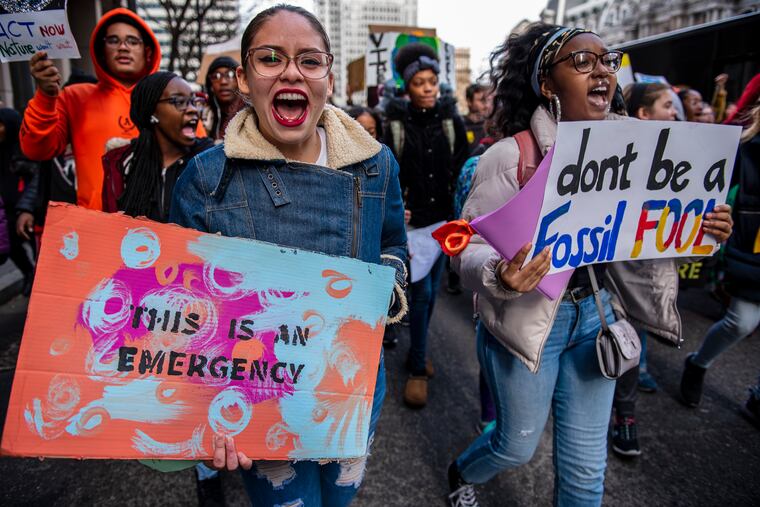From the climate crisis to COVID-19: Can journalism focus on the stories that matter? | Opinion
Exactly none of what we as journalists learned about our nation in the past three months should have come as a surprise.

To hear many journalists tell it, the spring of 2020 brought a series of extraordinary revelations. Look at what the nation has learned: That our health-care system was not remotely up to the challenge of a deadly pandemic. That our economic safety net was largely nonexistent. That our vulnerability to disease and death was directly tied to race and where we live. That our political leadership sowed misinformation that left people dead. That systemic racism and the killing of Black people by police is undiminished, despite decades of protest and so many Black lives lost.
This summer and fall, all of these stories will crash together as Americans vote in an election that is also a decisive point in the overarching story of our time — the onrushing climate emergency. This summer, scientists say, will bring heatwaves, wildfires, and “one of the most active” hurricane seasons on record. Protests against racial injustice may well rise along with temperatures, no doubt fueled by more videos of pain and death.
In the fall, our health crisis could increase as the COVID-19 pandemic collides with the seasonal flu while the U.S. economy continues to experience Great Depression levels of unemployment. It is to the shame of journalism if we don’t get to the root of why all of this is happening so that voters can make informed choices in November.
It’s worth remembering the media hand-wringing that followed the election of Donald Trump in 2016. Mainstream news outlets, out of touch and understaffed, reported largely from inside their own establishment bubbles, and few in those confined spaces believed Trump had a shot at winning. So the press missed the story. It didn’t understand the stirring of disaffection in the country; it underestimated the racism and economic fear that would drive white people to support Trump; it misread polling and cherry-picked data to convince itself that a Trump loss was inevitable.
At the start of the 2020 election year, despite pledges by newsroom leaders to do better, the same tendencies showed. Trump was defining the narrative. Structural chasms in the country were ignored. The Democratic field was reduced to caricature.
Then came the coronavirus and the police killing of George Floyd. Exactly none of what we as journalists learned about our nation in the last three months should have come as a surprise. We have known, or should have known, that the public health system in the U.S. is overpriced and unequal. We have known, or should have known, that Americans are not equipped to withstand an economic downturn. We have known, or should have known, that racial injustice is pervasive in our country (and in our media) and that Black people continue to die, be incarcerated, and suffer economically at tragically disproportionate rates.
“The fact that it took a pandemic, police killings, and mass protests to focus mainstream journalistic attention on these issues is damning.”
The fact that it took a pandemic, police killings, and mass protests to focus mainstream journalistic attention on these issues is damning and must prompt a reappraisal of how we work. Why weren’t newsrooms obsessing about these issues before the world imploded this spring? Why must we always be reactive to injustice, instead of proactively highlighting it?
Which brings us to the climate crisis.
If the journalistic status quo holds, news organizations will respond to the extreme weather events forecast for this summer by going into disaster-coverage mode. They’ll take astonishing pictures of the destruction and hear heroic stories from survivors and rescue workers. Only after the disaster is over will they perhaps take a moment to examine why these disasters are occurring, again and again, all over the world, with increased frequency and ferocity.
There’s a pattern here. The press waits for news to happen when, in fact, we shouldn’t need another Black person to be shot to start reporting on racism in the police force. Nor should we need yet another Category 5 hurricane to flatten yet another community before we sound the alarm that the planet is on the brink of climate collapse.
Between now and Election Day on Nov. 3, we hope newsrooms will remember the big picture and cover the real horse race. The contest between Republicans and Democrats is of great interest, of course. But the horse race that matters most is humanity’s collective race to defuse the climate emergency so we have a livable planet 20 years from now and beyond. If the press is most comfortable sending reporters into disaster zones, so be it. But the disaster is here. It is raging. Our job is to cover it with the urgency it deserves.
Mark Hertsgaard is the executive director of Covering Climate Now. Kyle Pope is the editor and publisher of the Columbia Journalism Review. This story is co-published as part of Covering Climate Now, a global collaboration of more than 400 news outlets to improve coverage of climate change.